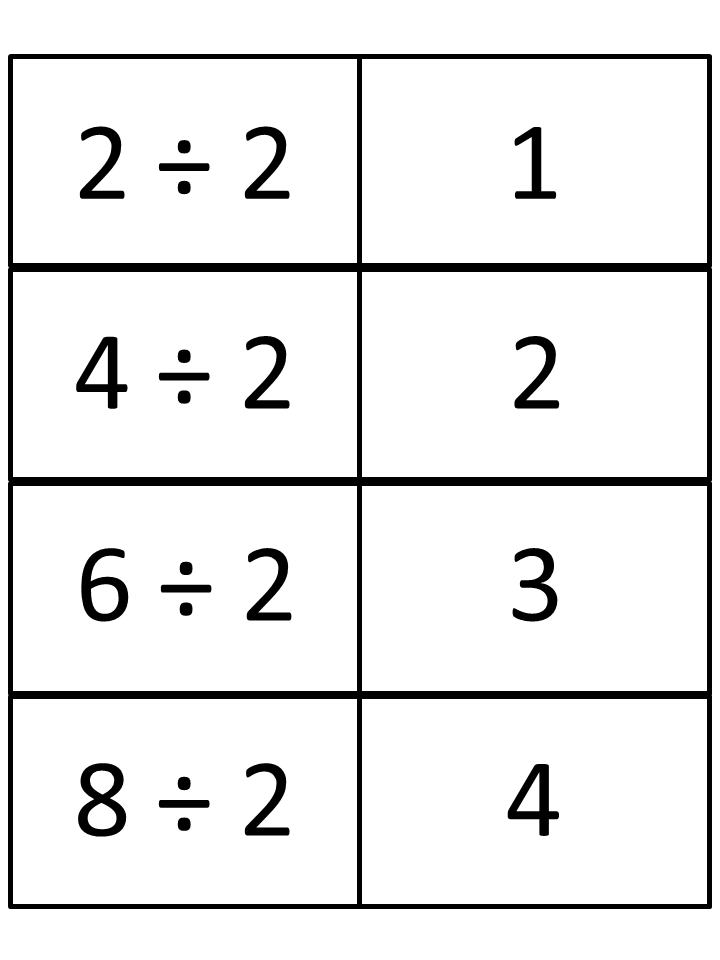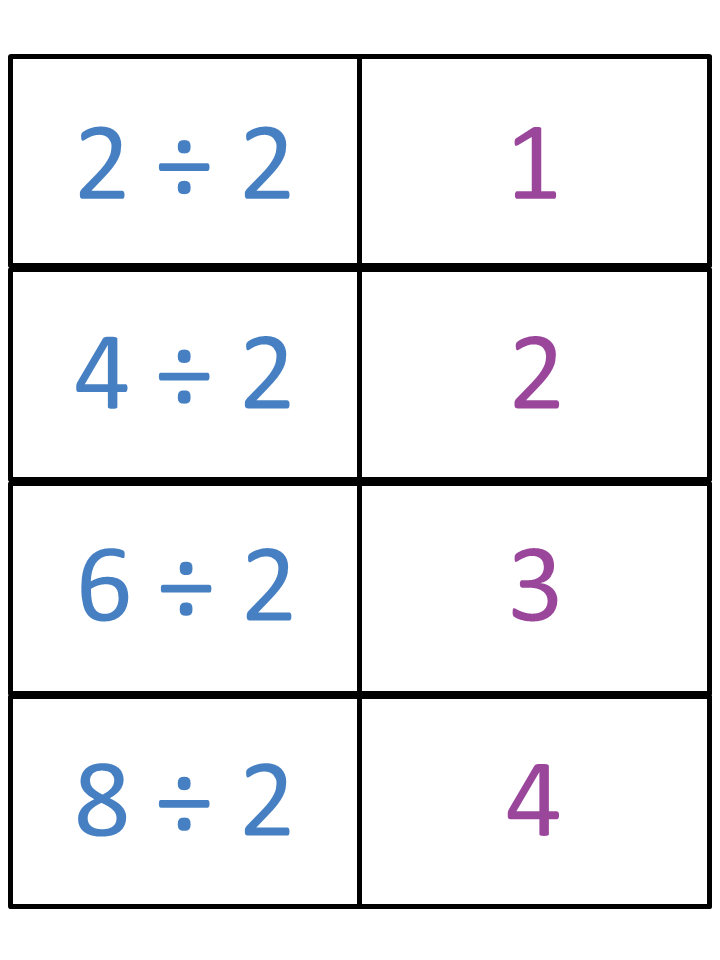The Flash Cards
Introduction
Our division flash cards are an excellent tool for teaching children their basic division math facts and to reinforce their understanding of the multiplication times tables.
Once a child has learned, say, their 6 times table they should also be able to divide by 6; yet ask some children, “What is 24 divided by 6?” and you draw a blank.
This situation provides an ideal opportunity to reinforce the meaning of division. With a little bit of work, children will realize that once they can multiply they are able to divide just as easily!
Our Free Flash Cards
We have produced two sets of division flash cards – one in color and one in black and white.
To get started, simply print out the cards and cut them out, remembering not to cut the vertical line linking each question and answer. Then fold each card along the vertical line and glue the two parts together, leaving you with the question on one side and the answer on the other.
Or, if you would prefer to simply buy some, this set is very favorably reviewed and only costs a few dollars.
Suggestions For Use
There are numerous ways to take advantage of division flash cards. Here are a few:
1. Explain that division is sharing: It is a good idea to take a card and link it to a real world example. For instance, taking the “6 ÷ 2” card, you might say, “If I have 6 apples and I want to share them between 2 people, how many will each person get?” Discuss with your child what this means – you may like to grab 6 apples and divide them between you and your child to help make things clear.
2. Discuss relationships: Take the “21 ÷ 7 = 3” card and the “21 ÷ 3 = 7” card and explain how the two are related. If you wish, why not also grab the “7 x 3 = 21” and “3 x 7 = 21” cards from our multiplication flash cards and discuss how all four cards are closely related.
3. Play games: Some children love competing with their parents or other family members. Simply take some or all of the cards and see who can correctly answer them in the shortest time. If you are faster than your child give yourself a handicap to make things closer.
4. Individual learning: Your child can benefit from spending time alone with our division flash cards. Encourage them to cycle through, looking at the question side and working out the answer and then turning over the card to check. Practicing alone frees them from pressure and allows them to move at their own pace.
5. Expanding knowledge: It is important to be able to use what you know to work out what you don’t know. For example, let’s say your child is struggling to answer 54 ÷ 6, but has no problems knowing that 48 ÷ 6 = 8. By pointing out that 54 is not much more than 48, (6 more to be precise!) and that therefore the answer must be 1 more than 8 you will be helping them develop this analytical skill.
6. Applying knowledge: One of the reasons that learning the math facts is so important is the power they give you. Once your child is proficient with our flash cards why not give them some expansion questions? For example, given they know that 14 ÷ 7 = 2, what is 140 ÷ 7? What about 140 ÷ 70? Or, given they know that 72 ÷ 6 = 12, what is 78 ÷ 6? What about 84 ÷ 6? Your child will realize that by applying their basic knowledge they are capable of answering quite challenging questions in their head.
Final Word
Once multiplication tables have been learned, the ability to divide up to 12 (or 10) should not be far away.
Some time spent with division flash cards is a great investment in bedding down a child’s conceptual knowledge and memorization of the times tables as well as helping them to realize that division is anything but scary.
Lastly, as we always say, make it fun! Make a real effort to ensure that your child enjoys their time spent with flash cards as they continue to develop their mathematical confidence.
Back to preschool education from division flash cards



